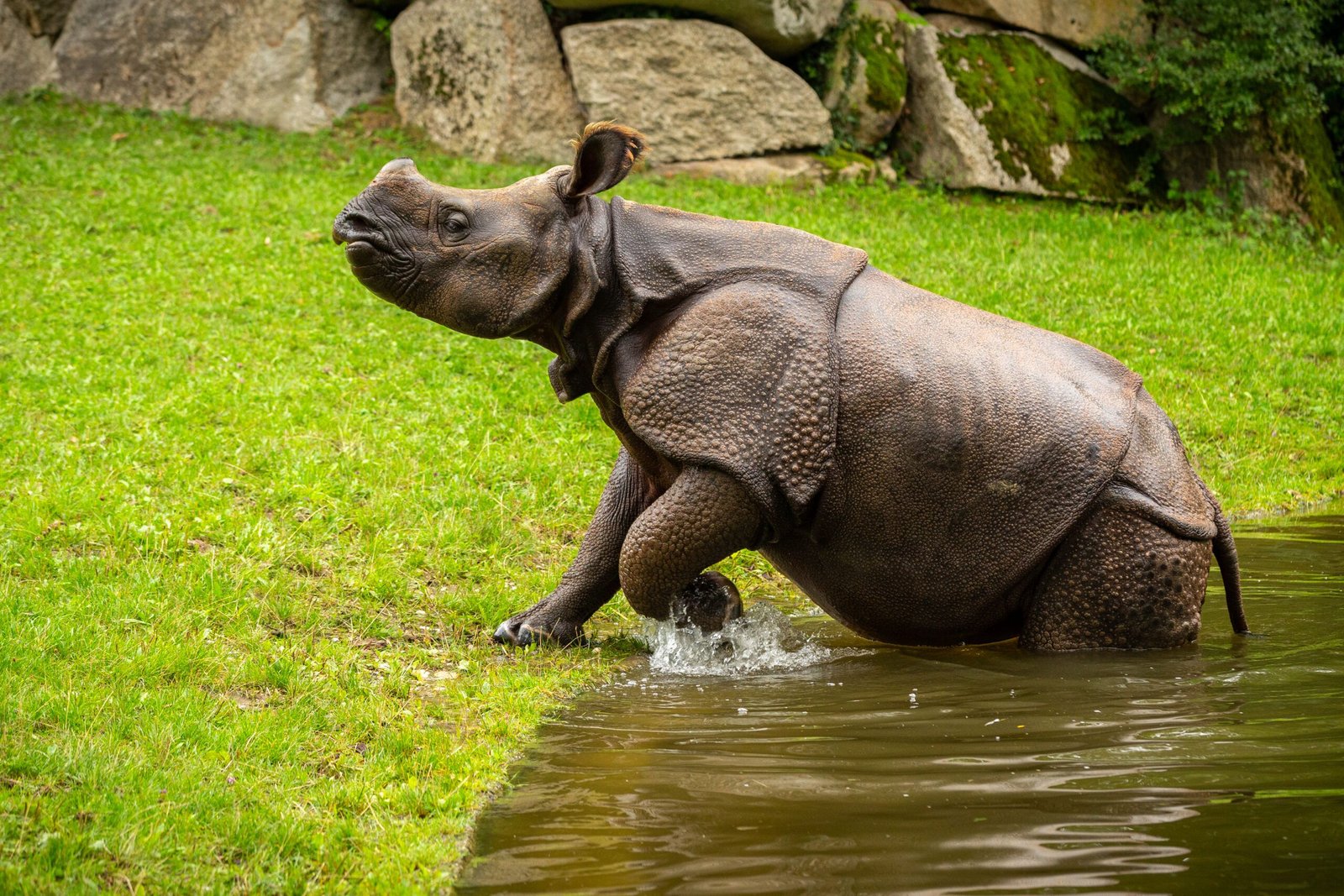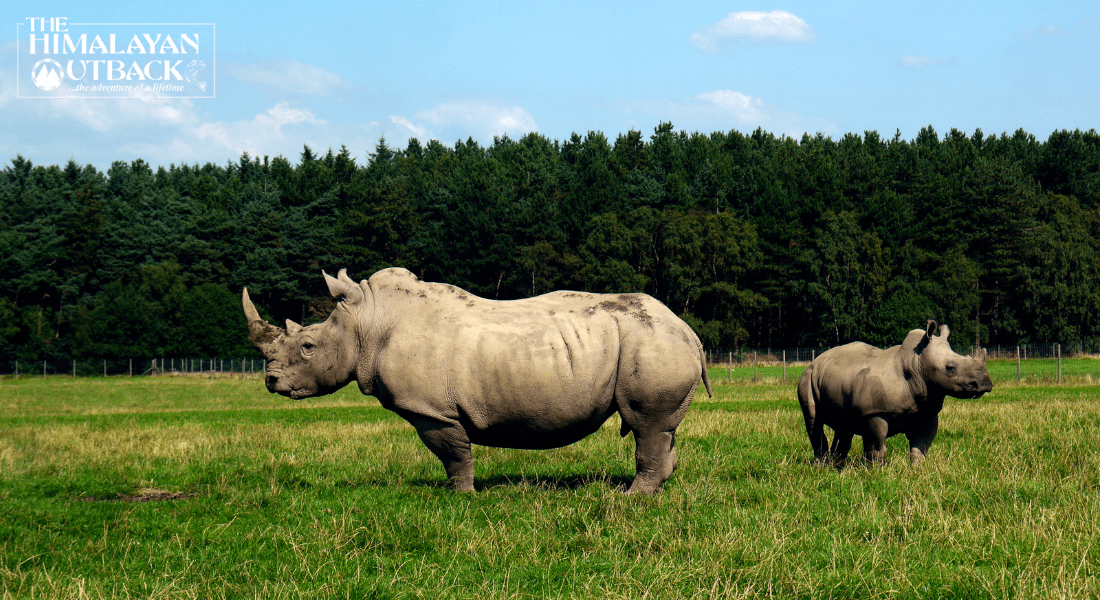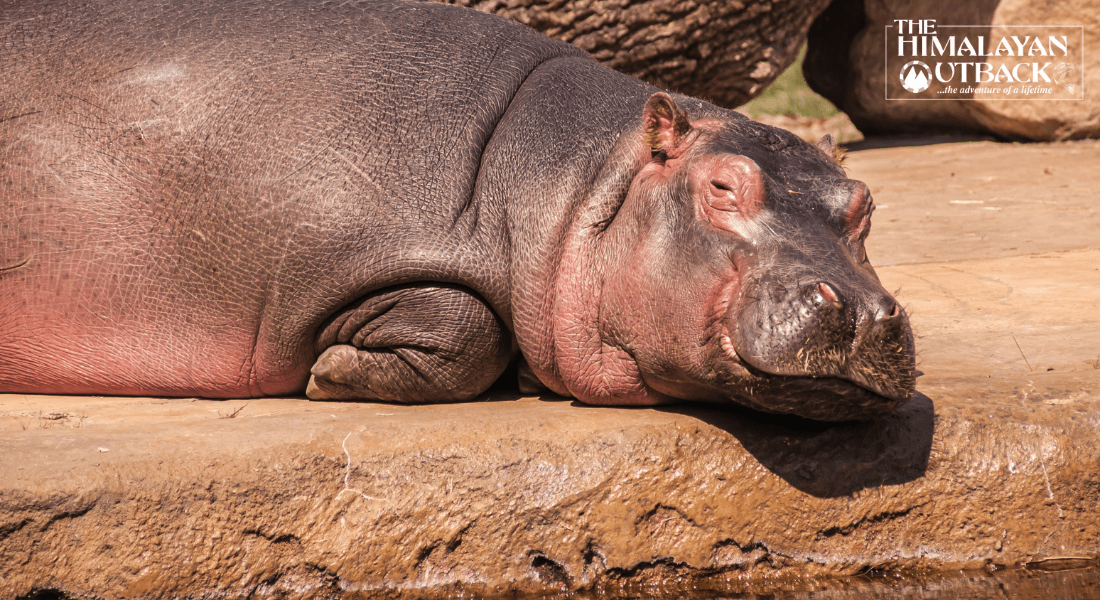Rhinoceroses are big herbivorous animals distinguished by their horned snouts. The term “rhinoceros” is derived from the Greek words “rhino” (nose) and “ceros” (horn). There are five rhino species and 11 subspecies; some have two horns, while others only have one. In India, one-horned rhino is found. And Kaziranga is home to around 80 percent of India’s total rhino population.
Rhinos have been driven nearly to extinction because their horns are employed in traditional medicine for their alleged medicinal abilities. Their horns are occasionally sold as trophies or ornaments, but they are more commonly ground up and utilised in traditional Chinese medicine. According to the International Rhino Foundation, the powder is frequently added to food or made into tea in the idea that the horns are a potent aphrodisiac, hangover cure, and therapy for fever, rheumatism, gout, and other illnesses.
Read the following article by The Himalayan Outback and get to know some facts about Rhinoceros that will surprise you for sure.
There Is More Than One Type.
There are five different species of rhinoceros. While most people associate them with Africa, they may also be found throughout Asia. The Black and White rhinos inhabit Africa, whereas the Sumatran, Javan, and Indian (or bigger one-horned) rhinos live in Asia’s tropical woods and wetlands. Eastern and southern Africa, as well as India, Nepal, Vietnam, Malaysia, and Indonesia, are home to this species.
Their name is a literal translation.
Rhinos are famous for their horns, and they were titled after this characteristic. However, the name isn’t really inventive. The term rhinoceros is a literal combination of two Greek words that best characterise their appearance: rhino (nose) and ceros (horn).
Rhinoceros Horns Are Used for Medical Purposes.
For millennia, Asian doctors have used powdered rhino horn in their medication. While there is no data or study that proves rhino horn has true curative properties, it is nonetheless much sought for. According to the International Rhino Foundation, it has been used to treat and cure a variety of ailments, including ageing, arthritis, asthma, chest colds, chicken pox, convulsions, coughing, demonic possession, diphtheria, and a slew of others.
Rhinoceros Horns Are Made of Keratin.
You would imagine rhino horns are composed of solid bone, but they’re actually formed of the protein keratin—the same substance that makes up human hair and fingernails—and are essentially a compacted mass that expands throughout the rhino’s life. According to the International Rhino Foundation, the longest rhino horn ever measured was slightly under 60 inches.
The Name of a Rhino Group Is Awesome.
Rhinoceroses, for the most part, are solitary creatures who shun one another. However, some species, most notably the white rhino, may live in groups, a phenomenon known as a “crash.” They’re normally made up of a mother and her calves, although additional adult females can sometimes be found after a crash.
White rhinoceroses are the world’s third largest land mammal.
After African and Asian elephants, white rhinoceros are the third biggest land animal. White rhinoceros are the biggest rhinoceros species, weighing up to 6,000 pounds. Their heads may weigh up to 2,000 pounds on their own, and they stand between 5 and 6 feet tall.
Rhinos are herbivorous animals.
You’d think they’re major meat eaters based on their size. They are, however, vegetarians who can consume up to 100 pounds of food every day. They consume leaves, fruit, grasses, stems, and twigs, depending on the species.
Not all Rhinoceros fight with their horns.
You’d think that having a massive weapon right on your face would be an obvious weapon for warfare, yet some rhinos really fight with their teeth. Instead of horns, the three Asian species (Sumatran, Javan, and Indian) use their lower outer incisor teeth. Indian rhinoceros teeth may grow to be 5 inches long and leave a horrible mark if used to fight off other rhinos or predators. However, the African species (Black and White rhinos) lack these lengthy incisors and fight with their horns.
They also leave massive dumping.
According to the International Rhino Foundation, rhinos may create up to 50 pounds of excrement every day. Their excrement also serves an important function in identifying their territory, since each rhino’s dung has a distinct fragrance that male rhinos use to keep others away from their region. They can build between 20 and 30 mounds to warn other rhinos to keep away.
They have extremely sensitive skin.
Even though they live in some of the warmest and sunniest locations, their skin isn’t designed to withstand the elements. Rhinos are easily sunburned and prone to nasty insect bites. To combat this, rhinos frequently bathe in mud to provide a barrier between their skin and the sun and pesky bugs.
Rhinos Have Surprising Cousins.
The rhino’s closest cousins are tapirs, horses, and zebras. These are odd-toed ungulates, and their footprints look like the Ace of Clubs!
Rhinos Communicate Using Infrasonic Frequencies.
Because humans cannot hear rhinos, you are unlikely to hear them making noise. Rhinoceroses, like elephants, communicate utilising infrasonic frequencies that are below the human hearing threshold. Researchers believe this method has evolved because they live in thick forest and utilise it to lure breeding mates.
Pregnancies in rhinos last 15-16 months.
You read it correctly: a complete rhino pregnancy lasts almost a year and a half. Rhinos only have one calf every year, and babies seldom see their dads. Male and female rhinos split after mating, and female rhinos rear their offspring.
Rhinos are extremely fast.
Rhinos are large, yet they are not sluggish. A black rhinoceros can run at speeds of up to 30 kilometres per hour. They’re also incredibly agile, able to avoid trees and branches in dense vegetation while turning swiftly.
Their numbers are decreasing.
Today, it is believed that there are just 29,000 rhinos living in the wild, compared to 500,000 before the turn of the twentieth century. In Asia, two rhino species—Javan and Sumatran—are severely endangered. Here are the figures for each species, according to the World Wildlife Fund, and here’s one method to aid conservation efforts.










4 Responses
https://amoxildelivery.pro/# buy amoxicillin 500mg
https://clomiddelivery.pro/# can i purchase clomid without prescription
http://paxloviddelivery.pro/# paxlovid pharmacy
http://ciprodelivery.pro/# cipro 500mg best prices